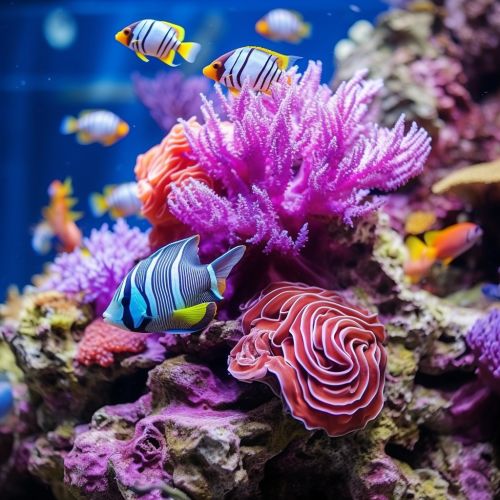The Biological Mechanisms of Symbiosis
Introduction
Symbiosis is a biological phenomenon where two or more species live in close proximity and interact in a way that benefits at least one of the participants. This interaction can range from mutualistic, where both species benefit, to parasitic, where one species benefits at the expense of the other. The mechanisms that underpin these interactions are diverse and complex, involving a wide range of biological processes, from cellular communication to evolutionary adaptations.


Types of Symbiosis
There are three main types of symbiosis: mutualism, commensalism, and parasitism. Each of these types represents a different form of interaction between species, characterized by the benefits and costs associated with the relationship.
Mutualism
In a mutualistic relationship, both species benefit from the interaction. This type of symbiosis is often characterized by co-evolution, where the two species evolve together, each influencing the other's evolutionary trajectory. An example of this is the relationship between flowering plants and their pollinators. The plants provide nectar, a food source for the pollinators, while the pollinators help the plants reproduce by transferring pollen from one flower to another.


Commensalism
Commensalism is a type of symbiosis where one species benefits, while the other is neither harmed nor benefited. An example of this is the relationship between barnacles and whales. The barnacles attach themselves to the whale's skin, gaining a mobile home and access to nutrient-rich waters, while the whale is largely unaffected.


Parasitism
In parasitic relationships, one species, the parasite, benefits at the expense of the other, the host. The parasite typically harms the host in some way, often by consuming its resources. An example of this is the relationship between ticks and mammals. The ticks feed on the mammal's blood, potentially causing harm or transmitting diseases.


Mechanisms of Symbiosis
The mechanisms that underpin symbiotic relationships are diverse and complex, involving a wide range of biological processes. These mechanisms can be broadly categorized into physical interactions, chemical interactions, and genetic interactions.
Physical Interactions
Physical interactions in symbiosis often involve structural adaptations that enable the symbiotic relationship. For example, in the mutualistic relationship between corals and zooxanthellae, the corals provide a protected environment and access to light for the zooxanthellae, which in turn provide the coral with nutrients through photosynthesis.


Chemical Interactions
Chemical interactions in symbiosis often involve the exchange of nutrients or other beneficial substances. For example, in the mutualistic relationship between legumes and rhizobia, the rhizobia convert atmospheric nitrogen into a form that the legumes can use, while the legumes provide the rhizobia with carbohydrates.


Genetic Interactions
Genetic interactions in symbiosis can involve the exchange or alteration of genetic material. For example, in the parasitic relationship between bacteriophages and bacteria, the bacteriophages inject their genetic material into the bacteria, taking over their cellular machinery to reproduce.


Evolution of Symbiosis
The evolution of symbiotic relationships is a complex process, often involving co-evolution, where the two species evolve together, each influencing the other's evolutionary trajectory. This process can lead to a high degree of specialization, where the symbiotic partners become highly adapted to each other.


Conclusion
Symbiosis is a complex and diverse phenomenon, involving a wide range of biological processes and mechanisms. Understanding these mechanisms can provide insights into the intricate relationships between species and the complex dynamics of ecosystems.


